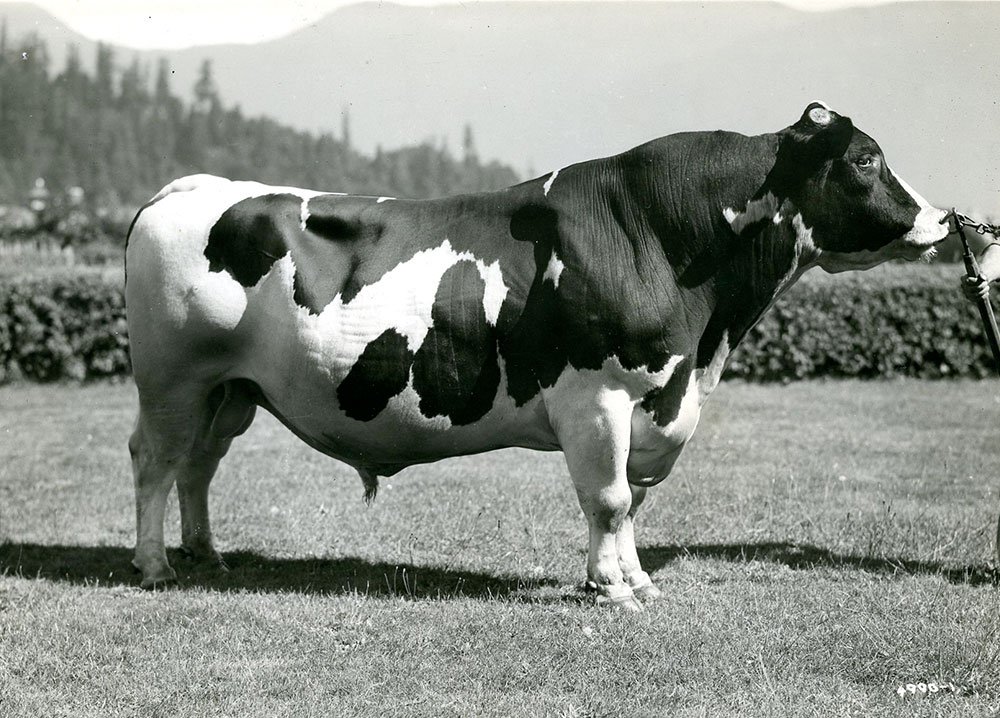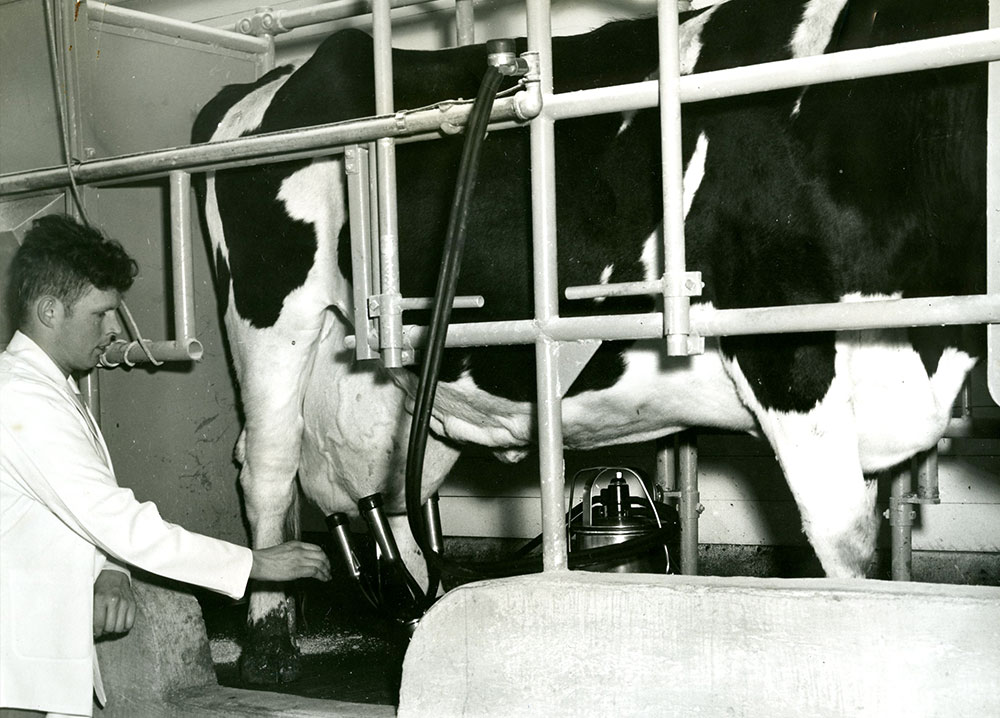Technological Advancements and Agassiz’s Prize-winning Herds
Research and technological advancements in the 1930s and 1940s continued to improve herd health and milk production. In 1930, a Master Breeder’s Shield was awarded to the Agassiz Experimental Farm by the Holstein-Fresian Association of Canada. By the early 1940s, most farms had electricity, which powered milking machines, and enabled the maintenance of much larger herds. Many farms had upwards of 100 animals.
Further technological advances resulted in the development of milking parlours and stainless steel bulk tanks in the 1950s. Multiple cows could be milked simultaneously and the milk easily stored until it was picked up by refrigerated trucks. In addition to the Holsteins, Agassiz farmers also bred, and are known for, their Guernseys, Jerseys and Ayrshires. The artificial insemination plant opened in Chilliwack in 1945, which further assisted in the maintenance of these herds. Local farmers could now access some of the best bulls in the country, locally, and no longer had to keep the bull on the farm.
Today’s Agassiz dairy farms raise up to several hundred cows each. They also maintain spotless mechanized and computerized milking parlours and continue to store the milk in bulk until it is transported by truck to the processing plants in the Fraser Valley. This unique local agricultural accomplishment was also supported by the availability and success of crops. Cows love corn silage and the advancements in technology over the past century have also assisted in increasing the productivity of and efficiency in sowing, harvesting, and processing corn.



